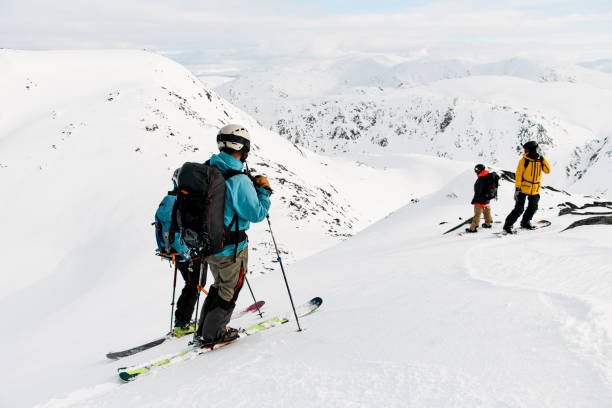Flying over Iceland offers an absolutely breathtaking and unique perspective on one of the world’s most geologically active and visually stunning landscapes. It’s an experience that truly highlights the island’s nickname, “The Land of Fire and Ice.”
Here’s what makes flying over Iceland so amazing and what you might see:
A Symphony of Geological Wonders
From above, Iceland’s raw, untamed nature is laid bare. You’ll witness a palette of colors and textures that are unlike almost anywhere else on Earth.
- Volcanic Landscapes:
- Black Sands and Lava Fields: Vast expanses of black volcanic sand, particularly noticeable along the south coast (like Mýrdalssandur), stretch out to meet the ocean. You’ll see ancient, rugged lava fields, some covered in green moss, others still stark and dark from recent eruptions.
- Craters and Volcanic Cones: Perfectly formed volcanic cones and large calderas are easily identifiable from above, showcasing the raw power that shaped the island.
- Fissure Eruptions: If you’re lucky enough to fly during or shortly after an eruption (like the recent Fagradalsfjall or Litli-Hrútur eruptions), you might see active lava flows, glowing fissures, and plumes of smoke, a truly once-in-a-lifetime sight.
- Glaciers and Ice Caps:
- Vatnajökull: Europe’s largest glacier dominates the southeast, appearing as an immense, undulating white expanse. You can clearly see its outlet glaciers spilling down into the valleys, often looking like frozen rivers of ice.
- Langjökull, Hofsjökull, Mýrdalsjökull, Eyjafjallajökull: These massive ice caps also present stunning vistas, with their pristine white surfaces contrasting sharply with the dark volcanic rock.
- Glacial Rivers and Braids: As the glaciers melt, they feed a complex network of braided rivers that meander across the black sands, creating intricate, ever-changing patterns from the air. These are particularly striking for aerial photography.
- Geothermal Activity:
- Steam Plumes: Even from cruising altitude, you might spot plumes of steam rising from geothermal power plants or natural hot spring areas, indicating the intense heat bubbling beneath the surface.
- Colorful Hot Springs: In areas like Landmannalaugar or Askja, the geothermal activity paints the landscape with incredible hues of red, orange, green, and yellow, visible even from higher up.
- Dramatic Coastlines:
- Cliffs and Sea Stacks: The rugged coastline, particularly in areas like the Westfjords or around Dyrhólaey, reveals towering cliffs and dramatic sea stacks pounded by the Atlantic waves.
- Black Sand Beaches: The famous black sand beaches of the south coast, like Reynisfjara, are even more striking from above, with the white foam of the waves creating a stark contrast against the dark sand.
- Water Features:
- Waterfalls: While difficult to fully appreciate their scale from a distance, the sheer number of waterfalls cascading down cliffs and into gorges is impressive. From above, you can see the rivers carving their paths through the landscape to these drops.
- Lakes: Iceland’s numerous lakes, from serene glacial lakes to vibrant volcanic lakes (like the turquoise-blue crater lake of Víti in Askja), add splashes of color and texture.
Specific Experiences & Tips for Flying Over Iceland
- Commercial Flights: If you’re flying into or out of Keflavik International Airport (KEF), try to get a window seat. The descent/ascent often offers incredible views, especially if you’re flying over the Reykjanes Peninsula with its recent lava flows, or catching glimpses of glaciers further north.
- Domestic Flights: Taking a domestic flight (e.g., from Reykjavik to Akureyri, Ísafjörður, or Egilsstaðir) provides guaranteed incredible views. These smaller planes often fly lower, offering a more intimate perspective of the mountains, fjords, and inland landscapes.
- Scenic Helicopter/Plane Tours: For the ultimate aerial experience, consider a dedicated scenic flight. These tours are designed to showcase specific geological features, flying lower and allowing for better photography. Popular options include:
- Golden Circle tours from above: See Þingvellir, Geysir, and Gullfoss from a unique angle.
- Glacier tours: Fly directly over ice caps and see glacial lagoons.
- Volcano tours: If there’s an active eruption, these tours are immensely popular for close-up views of flowing lava.
- Highlands tours: Explore the remote, uninhabited interior, often featuring colorful rhyolite mountains and vast ice fields.
- Aurora Borealis from the Air: If you’re flying at night during the aurora season, being above the cloud cover can significantly increase your chances of seeing the Northern Lights. The views can be spectacular, without light pollution from the ground.
What to look for:
- Patterns and Textures: The way lava flows have cooled, the braids of glacial rivers, the patchwork of moss and rock – these create stunning abstract patterns.
- Color Contrasts: The vivid blues of glacial ice and water against black sand, the greens of moss, the ochres and reds of geothermal areas.
- Scale: From above, you truly grasp the immense scale of Iceland’s wilderness, the vastness of its glaciers, and the raw power of its volcanic forces.
In essence, flying over Iceland is not just a mode of transport; it’s a fundamental part of the Icelandic adventure, offering a visual spectacle that sets the stage for or beautifully reflects your ground-based explorations.


0 Comment